Kurinjimala Sanctuary Kerala – Things to See and Do

Legends say love is not a futile emotion emerging and leaving us as waves; it is all about patience and waiting. This is what the Neelakurinji flower stands for – eternal and ardent love for which its admirers have to wait 12 years to watch it in its full bloom, covering the valleys of Kurinjimala Sanctuary with its purplish blue allure. Though Kurinjimala Sanctuary is a hub of nature with grand ranges, lush green valleys, wide grasslands and frolic rivers, its charm lies in the Kurinji flowers that grow on the wide terrain of Kurinjimala Sanctuary, and in honour of which the sanctuary organises a Neelakurinji festival every year in October.
Essential Information About Kurinjimala Sanctuary
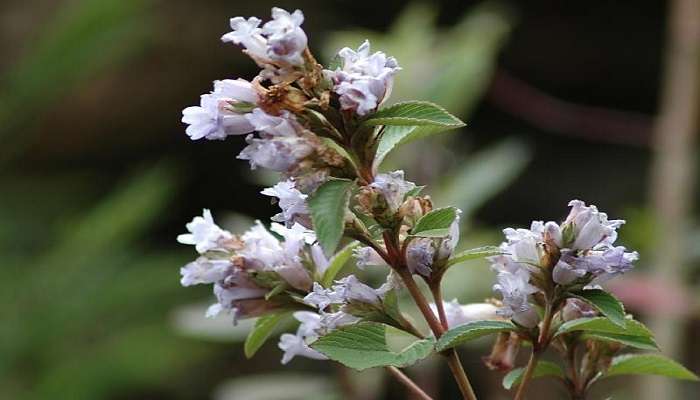
Established on 7 October 2006, when the Neelakurinji flower was bloomed, covering the valley of Kurinji with its blue grandeur, Kerala Forest Minister Benoy Viswam was urged by people to declare it as a sanctuary solely for the protection of this symbol of ardent love. Though Kurinjimala Sanctuary is famed for the charm of Neelakurinji flowers, it is not all. The Sanctuary is also home to Elephant, Nilgiri Tahr, Gaur and Deer or True Deer endangered species.
With Chinnar Wildlife Sanctuary to the northwest, Indira Gandhi Wildlife Sanctuary with Manjampatti Valley to the northeast, Eravikulam National Park and Anamudi Shola National Park to the west, Pampadum Shola National Park to the south and the proposed Palani Hills National Park to the east, Kurinjimala Wildlife Sanctuary severs itself as a connection to all these protected areas.
Must Read: Munnar In Summer
Kuruvar Tribe-Long Lost History Of Kurinji Mala
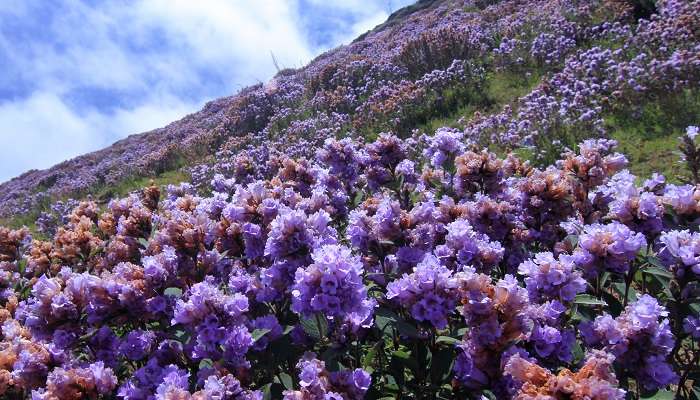
Where now the vast fields of the Neelakurinji flowers prevail, once stood the Kuruvar tribe, the first people who inhabited Southern India. Though, due to development over the years, the tribe lost its authenticity, culture, and eventually its existence, the valley still hoards the remnants of the magnificent tribe. As history inscribes, the Kuruvars were first a hunter-gatherer community, which later developed into an agrarian society with the cultivation of crops.
Over the years, the community has developed its delicacies, culture, dances, and even religion. The texts also speak of their rich taste in music and dance and their local dish made of mountain paddy rice mixed with tamarind and cooked with buttermilk. However, as time passed, the community faced several threats and eventually lost its battle to modernisation.
Neelakurinji Festival In Kurinjimala
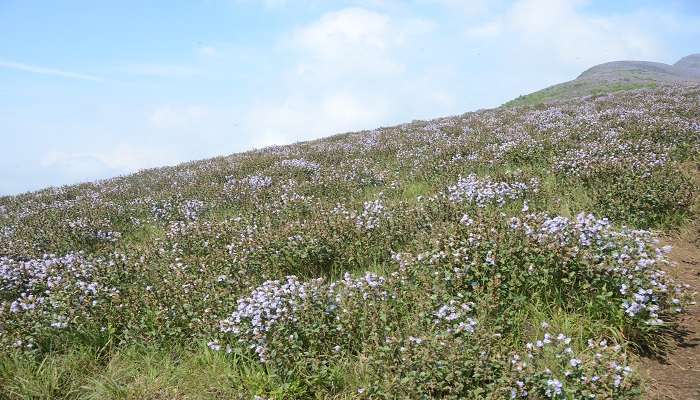
The declaration of Kurinjimala Sanctuary was not a one-day heist. It took the enthusiasm and will of so many nature volunteers who demanded the preservation of such beauty in the Nilgiri Hills. Until one day, with festivities celebrating the bloom of this long-awaited flower, the hills on which it resided were declared a sanctuary. Not only were Neelakurinji flowers celebrated and recognised, but all the Kurinji flowers were brought to glory.
Kurinji Wildlife Sanctuary existed in 2006 when the Neelakurinji covered the hills of Kurinji Blue. From then, the visitors wait for 12 years to see the mountains of Kurinjimala turn blue in the blooming. In 2018, when the Neelakurinji flowers last bloomed, lakhs of people rushed into the valley to witness the natural glory of the valley, with the rocky terrain and scenic beauty of the mountains complementing the blue hills. This picturesque scenery will be recreated in 2030 when the Neelakurinji Flowers will return with their full glory, covering the mountains of Kurinjimala with its bluish blanket.
Suggested Read: Things To Do In Munnar
Things To Do In Kurinjimala Wildlife Sanctuary
There are various things to indulge in this wildlife sanctuary and feel the essence of nature.
1. Trekking
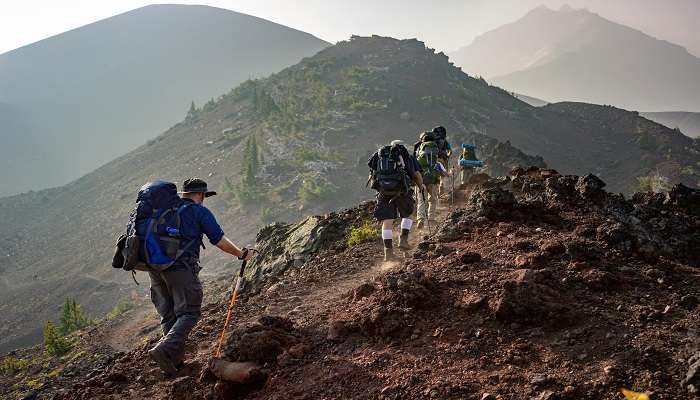
The best way to explore the glory of the blue flowers is to watch them, and the best way to watch them is an exhilarating trek to the land where Neelakurinji flowers bloom in their full glory, the valley of Neelakurinji flowers. Lying in the vicinity of Eravikulam National Park, one can have the privilege of watching the majestic flowers of the valley from Eravikulam Park, too. However, unlike Kurinjimala, Eravikulam National Park provides a glimpse of the Neelakurinji flowers.
Neelakurinji sure is the charm and pride of Kurinji Wildlife Sanctuary. However, there is more to Kurinji Wildlife Sanctuary, with its rocky terrains, wide grasslands, and frolic waters. Trekking to the cliffy rocks of Kurinji Wildlife Sanctuary is just the way to explore the scenic beauty of this absolute gem.
Charges: None
Timings: 8:00 am to 2:00 pm
2. Stay At The Sanctuary
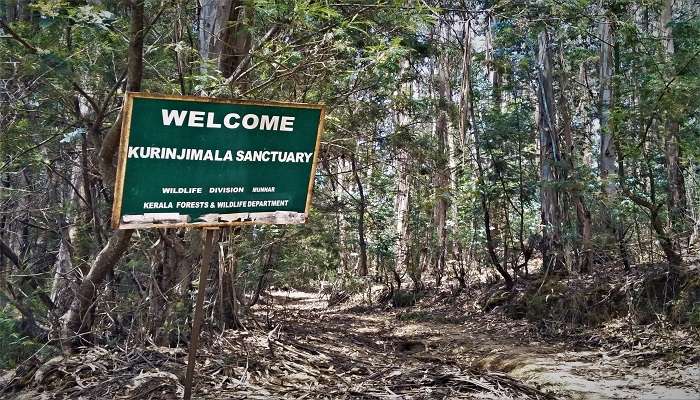
No peace is known to mankind like living in the lap of nature. A stay in Kadavari could provide exactly the same—the peace of living in a village amidst the beauty of the blue hills and the sanctity of nature. Kadavari is a village nestled in the valleys of Kurinjimala, and it is available for visitors to stay. Before establishing the famed sanctuary, the area was famous for cultivating Ganja.
However, after the Kurinjimala Sanctuary’s declaration, with the Forest Department’s joint efforts, this village nestled in the purplish aura of the valley has regained its glory. Along with a stay at this ethereal village, one can also stay at the Narco point.
Charges: None
Timings: 8:00 am to 2:00 pm
Suggested Read: Wildlife sanctuaries in kerala
Places To Visit Near Kurinjimala Sanctuary
When you indulge in various activities, don’t forget to visit the nearby attractions on your trip, as given below.
1. Chinnar Wildlife Sanctuary
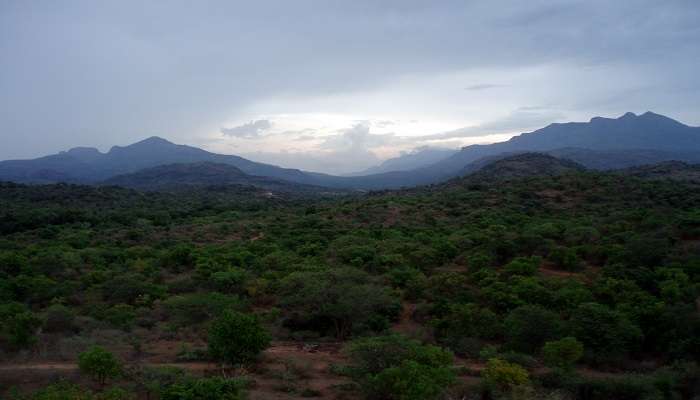
Contiguous to Kurinjimala Sanctuary is the Chinnar Wildlife Sanctuary is famous for preserving endangered Giant Grizzled Squirrels of India. Also, Chinnar Wildlife Sanctuary is home to a wide range of medicinal plants and herbs. As one trek through the woods of Chinnar Wildlife Sanctuary, one is bound to be mesmerised by the majestic peacocks, Hanuman Langur, and Sambar Deer. The deciduous woods of Chinnar Wildlife and the multiple streams that flow through the region add a natural chastity to the place one is bound to explore. However, the soul of the ethereal Chinnar Wildlife Sanctuary remains Thoovanam Falls, which can be seen by a moderate trek of 3 hours.
Though treks let us witness the wilderness’s untouched beauty, the nights show us the forest for what it is. Therefore, night camps amidst the grandeur of the magnificent hills are an experience that not everyone can resist. And that is what the night camps of Chinnar Wildlife Sanctuary provide—an ethereal experience.
Charges: Rs 500 per person
Timings: 8:00 am to 2:00 pm
2. Anamudi Shola National Park
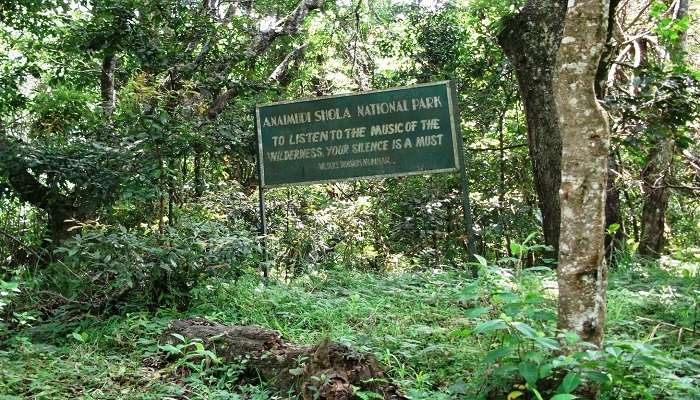
The picture always gets more straightforward with a little bit of elevation. Anamudi Shola Park, which has the tallest peak of the peninsular region, provides just the elevation you need with scenic views of the adjacent wildlife sanctuaries. With 174 species of herbs and shrubs, 62 species of trees and 40 climbers, Anamudi Shola National Park incorporates a vast variety of flora and fauna. As you climb down the mountain, you can experience a drastic change in the vegetation, with substantial broad valleys covered with minimal tea plants, giving the valleys a bright green colour of their own, which gives way to velvety grasslands.
In the wilderness of the Shola woods, one ought to find predictors of fresh air like lichen, mosses, and climbers, pointing to the purity of air in this nature’s hub.
Charges: Rs 125 per person
Timings: 7:30 am to 4:00 pm
Suggested Read: Munnar Travel Tips
3. Eravikulam National Park

Munnar is a town famed for its tea plantation, and while visiting this exceptional area, a visit to the wide tea valleys spread across the elevation of these hills is a must. Eravikulam National Park is one such place that provides a scenic view of the hills with the backdrop of the tea plantation, a site that is bound to remain with you in the long run of life. Eravikulam National Park also shares the charm of Neelakurinji flowers and Kurinjimala Sanctuary. During the blooming season, avid admirers of the enchanting beauty of Neelakurinji flowers flock to the park to see the blue mountains, covered with the allure of ardent love that this flower symbolises.
Amidst the blatant reign of the enchanting Kurinji flowers, one might glimpse Nilgiri Taur or the mountain goat, roaming around the blue mountains of the Eravikulam National Park.
Charges: Rs 125 per person
Timings: 7:00 am to 4:00 pm
4. Guna Caves Or Devil’s Kitchen
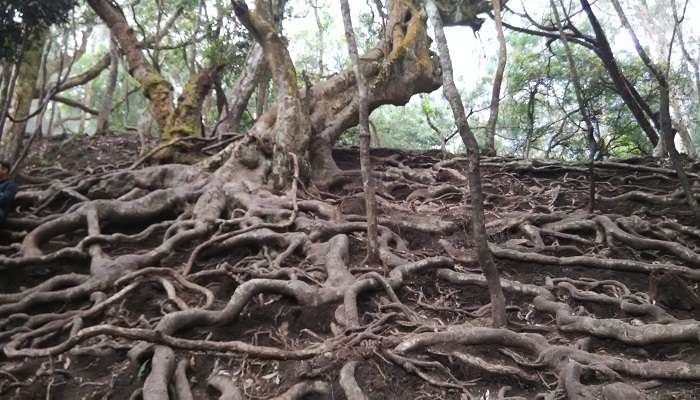
Resurfaced into light by the cinematic exposure, Guna Caves, located in the Palani Hills at an elevation of around 2000 m, is popular among visitors for its mysterious allure. Unlike its name, the Guna Caves are natural taverns created over time by soil erosion, providing scenic views of the misty mountains and the dense vegetation. An ancient refuge of the Christian Missionaries from the scorching sun, this naturally endowed region is nestled within three giant boulders known as the pillar rocks.
However, the region is closed during heavy rains, making it accessible only in summer and winter. This ancient cavern, backed up by the local legends, is a must-visit during your trip to Munnar.
Charges: Rs 10 per person
Timings: 9:00 am to 4:30 pm
Suggested Read: Shopping In Munnar
Best Time To Visit
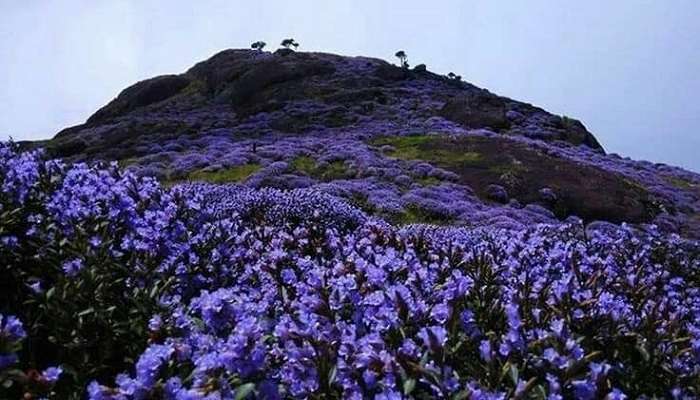
Kurinjimala Sanctuary, famed for the enchanting allure of Neelakurinji flowers, is at its peak from December to April. However, the best time to view the Neelakurinji flowers in full bloom is August to October. Therefore, one must visit the place from October to April to enhance one’s experience of its enchanting beauty.
Further Read: Places To Visit Near Munnar
Kurinjimala Sanctuary, though famed for its Kurinji flowers that turn the Kurinji hills into an enchanting shade of purplish blue, encompasses more. Kurinji Sanctuary is a sanctuary of History. It is the sanctuary of antiquity and above all it is a magical sanctuary of the people who once and still call it their home. Experience the magic of the enchanting Kurinji Hills by booking your trip to Kerala.
For our editorial codes of conduct and copyright disclaimer, please click here.
Cover Image Credit: Arayilpdas for Wikimedia Commons
Frequently Asked Questions About Kurinjimala Sanctuary
What is interesting about Kurinjimala Sanctuary?
Kurinjimala Sanctuary is famed for the mass flowering of the Neelakurinji flowers on the Nilgiri Hills. These flowers bloom once every 12 years.
Which animals are protected in Kurinjimala Sanctuary?
Kurinjimala Sanctuary is primarily known for protecting several endangered and endemic species. Nilgiri Tahr, Elephants, and Deer are the animals protected in Kurinjimala Sanctuary.
Which is the most miniature wildlife sanctuary in Kerala?
Pampadum Shola National Park, adjacent to Kurinjimala Sanctuary, is the most miniature sanctuary in Kerala. It is located in the eastern part of the southern western Ghats, about 35 Km from Munnar.
What are the best months to witness the blooming of Neelakurinji flowers?
The Neelakurinji flowers in Kurinjimala Sanctuary bloom once every 12 years from August to October. Therefore, October is the best month to witness them.
Which is the first national park in Kerala?
Eravikulam National Park, or Rajamalai National Park, is the first national park in Kerala. It is 97 sq km and located along the Western Ghats in the districts of Idukki and Ernakulam.
People Also Read:
Cotigao Wildlife Sanctuary Bhagwan Mahavir Wildlife Sanctuary Muthanga Wildlife Sanctuary

Unveil the hidden treasures of the globe and turn every travel dream into reality. As a Content Writer, I am passionate enough to craft stories from ancient wonders to modern marvels. My words paint the picture-perfect itinerary for unforgettable experiences. Let my words be your trusted guide to immerse in the diverse culture and discover the beauty of the unknown.











